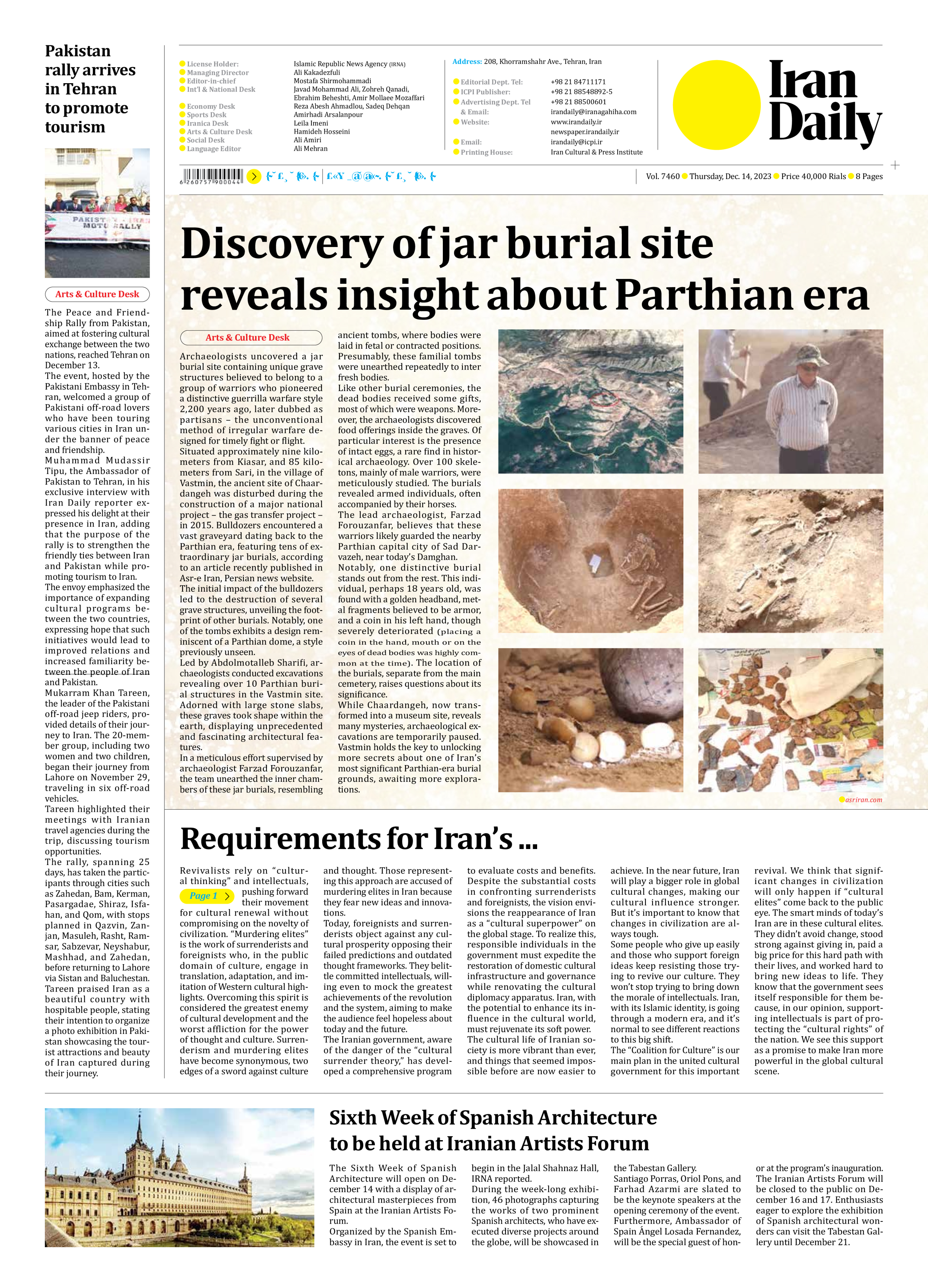
Discovery of jar burial site reveals insight about Parthian era
Archaeologists uncovered a jar burial site containing unique grave structures believed to belong to a group of warriors who pioneered a distinctive guerrilla warfare style 2,200 years ago, later dubbed as partisans – the unconventional method of irregular warfare designed for timely fight or flight.
Situated approximately nine kilometers from Kiasar, and 85 kilometers from Sari, in the village of Vastmin, the ancient site of Chaardangeh was disturbed during the construction of a major national project – the gas transfer project – in 2015. Bulldozers encountered a vast graveyard dating back to the Parthian era, featuring tens of extraordinary jar burials, according to an article recently published in Asr-e Iran, Persian news website.
The initial impact of the bulldozers led to the destruction of several grave structures, unveiling the footprint of other burials. Notably, one of the tombs exhibits a design reminiscent of a Parthian dome, a style previously unseen.
Led by Abdolmotalleb Sharifi, archaeologists conducted excavations revealing over 10 Parthian burial structures in the Vastmin site. Adorned with large stone slabs, these graves took shape within the earth, displaying unprecedented and fascinating architectural features.
In a meticulous effort supervised by archaeologist Farzad Forouzanfar, the team unearthed the inner chambers of these jar burials, resembling ancient tombs, where bodies were laid in fetal or contracted positions. Presumably, these familial tombs were unearthed repeatedly to inter fresh bodies.
Like other burial ceremonies, the dead bodies received some gifts, most of which were weapons. Moreover, the archaeologists discovered food offerings inside the graves. Of particular interest is the presence of intact eggs, a rare find in historical archaeology. Over 100 skeletons, mainly of male warriors, were meticulously studied. The burials revealed armed individuals, often accompanied by their horses.
The lead archaeologist, Farzad Forouzanfar, believes that these warriors likely guarded the nearby Parthian capital city of Sad Darvazeh, near today’s Damghan.
Notably, one distinctive burial stands out from the rest. This individual, perhaps 18 years old, was found with a golden headband, metal fragments believed to be armor, and a coin in his left hand, though severely deteriorated (placing a coin in the hand, mouth or on the eyes of dead bodies was highly common at the time). The location of the burials, separate from the main cemetery, raises questions about its significance.
While Chaardangeh, now transformed into a museum site, reveals many mysteries, archaeological excavations are temporarily paused. Vastmin holds the key to unlocking more secrets about one of Iran’s most significant Parthian-era burial grounds, awaiting more explorations.







